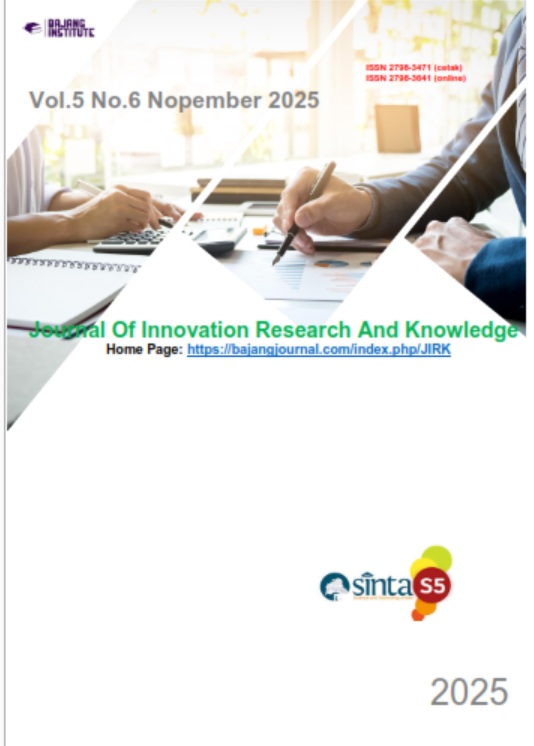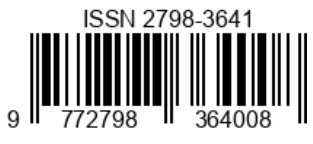OCAI ANALYSIS OF ORGANIZATIONAL CULTURE AS A REFLECTION OF BUSINESS SUSTAINABILITY (STUDY ON TRIATMA MULYA UNIVERSITY)
Keywords:
Organization, Culture, Reflection, SustainabilityAbstract
Triatma Surya Jaya Foundation (YTSJ), which manages education ranging from early childhood to postgraduate education established in 1992, is very thick with an organizational culture that upholds kinship. This organizational culture gives colour to every activity carried out to achieve the vision, mission, goals, and objectives of the organization. The purpose of this research is to analyse the organizational culture of Triatma Mulya University (UNTRIM) and identify whether it reflects the sustainability of the organization in the future. The respondents of this study were 173 employees of UNTRIM. Data validity test and descriptive analysis showed that only 149 respondents' data were valid for further analysis. Organizational culture was analysed by referring to the theory of Cameron and Quinn (2006), where there are four organizational cultures namely hierarchy, market, clan, and adhocracy. The instrument for processing this data is the Organizational Culture Assessment Instrument (OCAI) analysis, with six key dimensions of organizational culture, consisting of 1) dominant characteristics, 2) organizational leadership, 3) employee management, 4) organizational glue, 5) strategic emphasis, and 6) success criteria. The finding of this research is that the organizational culture at UNTRIM is CLAN. In CLAN organizational culture, UNTRIM governance is more collaborative oriented, conducted by leaders who act as mentors, facilitators, and team builders so that good communication is formed, and high commitment to achieve organizational goals is built. This research shows that UNTRIM also gives enough priority to the market culture that can increase the spirit of competition, consistency, and efficiency to achieve goals within timelines. This is also a reflection of the sustainability of the UNTRIM organization
References
Cameron, K. S., & Quinn, R. E. (2006). Diagnosing and changing organizational culture: Based on the competing values framework (p. 294). San Francisco, CA: Jossey-Bass
Coman, A., & Bonciu, C. (2016). Organizational Culture in Higher Education: Learning from the Best. European Journal of Social Sciences Education and Research, 6(1), 135. https://doi.org/10.26417/ejser.v6i1.p135-145
Chandler, N., Heidrich, B., & Kasa, R. (2017). Everything changes? A repeated cross-sectional study of
organisational culture in the public sector. Evidence-based HRM: A Global Forum for Empirical Scholarship, 5(3), 283–296. Retrieved from https://ideas.repec.org/a/eme/ebhpps/ebhrm-03-2017-0018.html
Corfield, A., & Paton, R. (2016). Investigating knowledge management: Can KM really change
organisational culture? Journal of Knowledge Management, 20(1), 88–103 https://doi.org/10.1108/
JKM-12-2014-0502
Dwi, K., Setyoningtyas, D., Riquelme, L., & Mahardiana, L. (2023). How Leaders Function in Higher Education Institutions. 2023, 117–126. https://doi.org/10.18502/kss.v8i19.14354
Egitim, S. (2022). Challenges of adapting to organizational culture: Internationalization through inclusive leadership and mutuality. Social Sciences and Humanities Open, 5(1), 100242. https://doi.org/10.1016/j.ssaho.2021.100242
Erdem, A. R. (2017). Organizational culture in higher education. Organizational Culture and Behavior: Concepts, Methodologies, Tools, and Applications, 3–4(April), 945–971. https://doi.org/10.4018/978-1-5225-1913-3.ch046
Fairs, M. (2016). Architecture and design an support or even change company culture. Retrieved from www.
dezeen.com/2016/03/22/haworth-white-paper-research-how-to-create-a-successful-organisationalculture-working-styles-office-design
Garvin, D. A., Quinn, R. E., & Sutton, J. C. (2022). Organizational culture and sustainability: A theoretical and practical perspective. Cambridge University Press.
Graham, J. R., Grennan, J., Harvey, C. R., & Rajgopal, S. (2022). Corporate culture: Evidence from the field. Journal of Financial Economics, 146(2), 552–593. https://doi.org/10.1016/j.jfineco.2022.07.008
Isa, M. R., Zaroog, O. S., & Raju, S. A. L. (2016). Survey on Total Quality Management in Small and Medium Manufacturing Industries in Shah Alam. International Journal of Science and Research (IJSR), 5(1), 848–853. https://doi.org/10.21275/v5i1.nov152706
Khadar, B. M. A. (2018). The Impact of Organizational Culture on Employee’s Satisfaction at the Jordanian Company of Investments “Safeway.” American Journal of Industrial and Business Management, 08(01), 13–26. https://doi.org/10.4236/ajibm.2018.81002
Nanayakkara, K., & Wilkinson, S. (2021). Organisational Culture Theories: Dimensions of organisational culture and office layouts. A Handbook of Theories on Designing Alignment Between People and the Office Environment, 132–147. https://doi.org/10.1201/9781003128830-12
Nandan, S., & Jyoti. (2020). Organizational Culture Dimensions as Drivers of Employee Engagement for Business Sustainability: Towards a Conceptual Framework. In Sustainable HRM (pp. 109–132). Springer Link. https://link.springer.com/chapter/10.1007/978-981-15-5656-2_7
Schein, E. (1992). Organizational culture and leadership (2nd ed., pp. 25–411). San Francisco, CA: Jossey-Bass Publishers.













